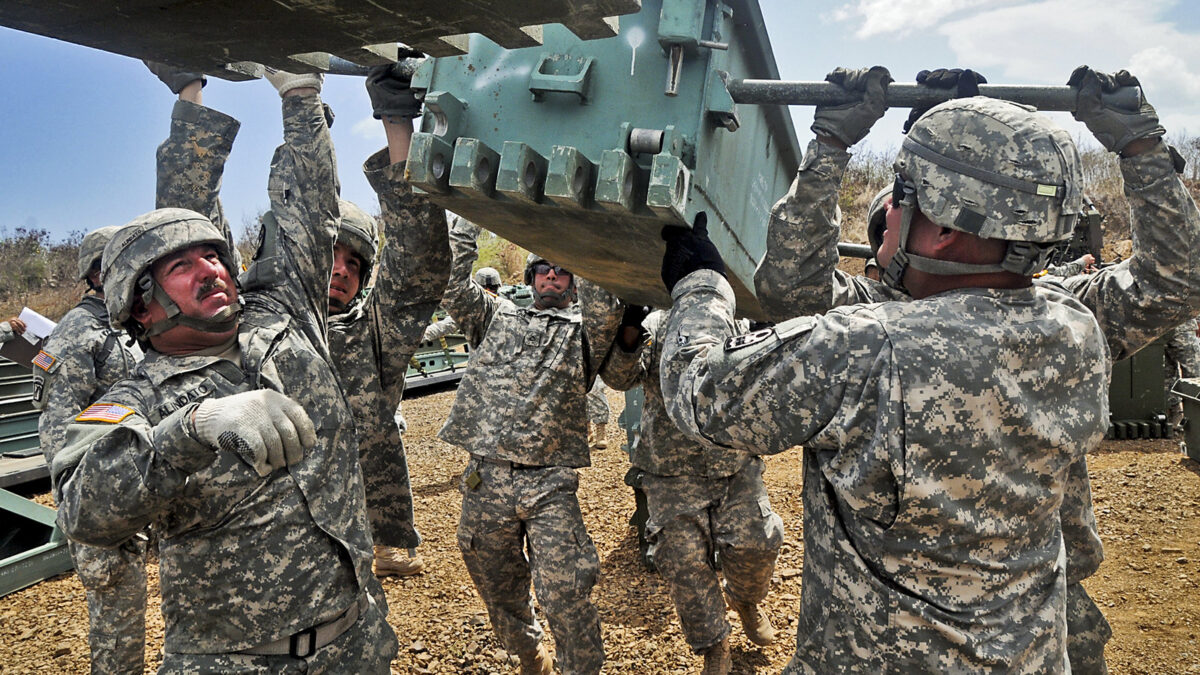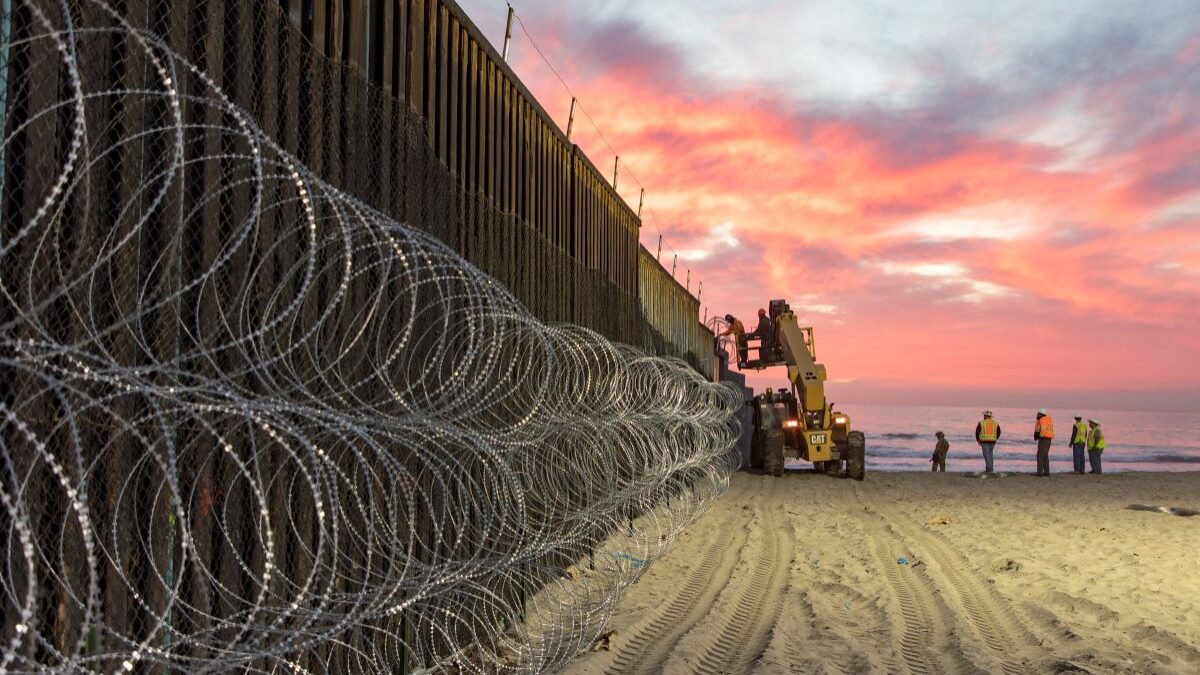Amid the first conventional war in Europe since 1945 and China’s massive military buildup — including nuclear weapons — the U.S. military is experiencing a dangerous drop in its warfighting capability. The U.S. Army, the largest service, has only reached 40 percent of its recruiting goal with just more than three months remaining in the fiscal year.
This military decay will continue under President Joe Biden’s disastrous anti-leadership and likely will take many years of concerted effort to reverse. Further, combined with the chaotic defeat in Afghanistan, America’s ability to deter its enemies from taking hostile action is at a low not seen since the late 1970s, making a major war far more likely.
There are three growing signs of trouble: an alarming collapse in recruiting, a profoundly unserious national security leadership, and weakness in the military supply chain and procurement.
Recruiting Collapse
The military is facing its most severe staffing crisis since the advent of the all-volunteer force in 1973. In March, the Department of Defense (DoD) announced it would reduce its active-duty end strength by 0.2 percent to a little more than 2.1 million. Pentagon comptroller Michael McCord assured us that it’s “not about making the force bigger. We’re looking at making the force more capable.” But only three months later, word broke that every branch in the military is having trouble meeting its recruiting goals.
As a result of its massive recruiting shortfalls, the U.S. Army has lowered its standards, dropping requirements for recruits to have a high school diploma or GED to enlist, while relaxing tattoo restrictions to allow tattoos on hands and neck without a waiver. These two decisions will result in a less capable force with troublesome discipline issues. The Army is even offering enlistment contracts as short as two years — barely enough time to learn the basics of modern warfare.
The DoD is even reviewing more than 250 disqualifications for service, such as asthma and ADHD. With only 23 percent of Americans ages 17-24 qualified to serve in uniform without a waiver and just 9 percent of those eligible to serve even interested — the lowest since the Iraq War troop surge in 2007 — something has to give, with some experts suggesting that a draft might be needed again. Fears over not being able to meet uniformed staffing levels might have informed the seven Republican members of the Senate Armed Services Committee who voted to require women to register for a military draft in June.
Biden’s defense officials may hope money solves the problem, but they’d be better advised to look in the mirror instead. When you openly accuse the military of being rightwing and harboring white supremacists, insist on schooling them in transgender pronoun usage, and then force them to get vaccinated for a Covid-19 virus that’s less threatening than the flu for the young and healthy military demographic, you shouldn’t be shocked that they don’t want to enlist under a leadership they neither trust nor admire.
To doublecheck that the economy wasn’t the overriding reason why recruiting is failing, I spoke with a friend who leads a large police academy in Texas. He said the classes are full of new recruits (although in Chicago, Oregon, and Washington State, areas where police are under attack, things are different). He even noted an influx of police coming into Texas from other states to escape Covid-19 vaccination requirements for public safety employees.
Profoundly Unserious Leadership
There are multiple warning flags that our civilian and senior military leadership are majoring in the minors while ignoring warfighting at our collective peril. Whether it’s the aforementioned policies or claiming climate change is an existential threat, our national security apparatus appears intent on losing its first engagement with a revanchist People’s Republic of China.
Even today’s extended 1 million barrels per day peacetime drawdown of the Strategic Petroleum Reserve is aimed at the threat to Biden’s approval rating rather than the potential loss of our ability to import oil during a crisis. As of June 24, the reserve stood at 497.9 million barrels, the lowest since 1985, eight years after the program’s start. That’s a 59-day supply of imports.
The over-hyped fear of a military overrun with right-wing extremists is especially maddening as Secretary of Defense Lloyd Austin initiated a military-wide standdown and struggle session on the premise of false reports from CNN and NPR. These outlets claimed that the ranks of those arrested in the wake of the Jan. 6 Capitol riot were doubly overrepresented by veterans. The claim, based on three math errors, was off by about 100 percent — meaning that the share of veterans among those arrested was exactly what one would expect from any random group of American adults who were almost 90 percent men.
At the time, retired Adm. John Kirby, then Austin’s spokesman, now communications chief for the National Security Council in the White House, darkly warned, “There may be cultural issues we have to deal with here.” Cultural issues? Tennessee Democratic Rep. Steve Cohen said the quiet part out loud when he worried that the National Guard soldiers sent to secure the Capitol in a symbolic show of force in 2021 were “predominantly more conservative” than Americans.
Military Procurement Weaknesses
The U.S. military supply chain has become increasingly reliant on the import of key items, such as computer chips. America makes 10 percent of the world’s computer chips with 75 percent of global production in East Asia and some 90 percent of the most advanced chips made in Taiwan.
Every Javelin missile launched in Ukraine at invading Russian forces uses a Javelin missile Command Launch Unit (CLU), and every CLU has more than 250 computer chips in it. As of mid-April, Ukraine received some 5,500 Javelin systems — CLU and missile — with reports that the United States has supplied 7,000 missiles so far, about one-third of its stockpile.
Javelin orders take 32 months to deliver, and in recent years, the United States has been buying only 1,000 Javelins per year with a maximum production rate of 6,480 per year. But the semiconductor-using industry typically has less than five days of chips on hand and it will likely take a year or more to reach the maximum production rate — assuming the chips will be available.
Unlike Russia’s invasion of Ukraine, a land war in which American supplies of anti-tank missiles, anti-aircraft missile, and artillery, have been sent in large numbers, a Chinese invasion of Taiwan would mostly involve the Navy and Air Force. Unfortunately, naval ship building and drydock repair is a glaring weak spot in our national security. America now builds fewer than 10 vessels for oceangoing trade every year — China builds more than 1,000.
In military shipbuilding, America strains to build more than four combat vessels per year. The U.S. Navy used to operate 13 shipyards — it has five now, with 14 new construction shipyards (commercial and government) lost since 1970. The U.S. Navy had 298 battle force ships in April (including the U.S.S. Constitution, built in 1797) and about another 190 support and reserve ships. Meanwhile, China has 350 warships and that number is climbing quickly.
My own decision to enlist the military in 1983 was motivated by President Ronald Reagan and his call to defeat the Soviet Union in the Cold War. In 2007, I retired as a lieutenant colonel. If I were 20 today, there’d be zero chance I’d enlist to serve under a group of people whom I thought hated me and despised my political views — and who would use my time in military service as a cross between a reeducation camp and an armed international social service agency.









